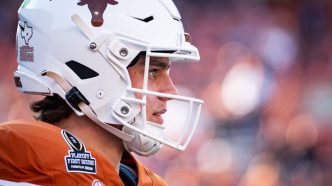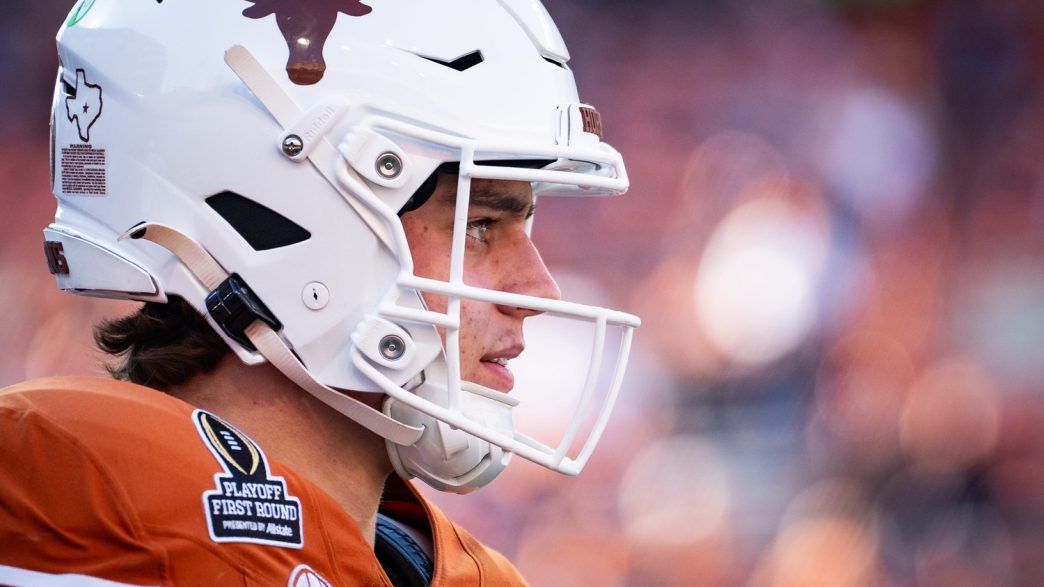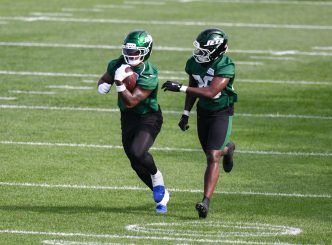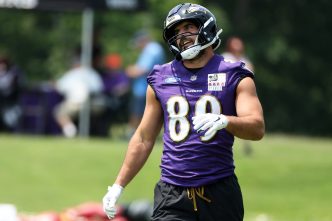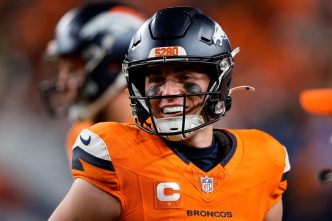The 2026 NFL Draft is shaping up to be a goldmine for teams like the Cleveland Browns and Los Angeles Rams, who have strategically added first-round picks in a class that promises a more promising quarterback pool than its 2025 predecessor. This decision could prove to be a game changer for both franchises, especially if Texas prodigy Arch Manning decides to declare, potentially making this one of the most exciting draft classes in recent history.
As one personnel executive aptly put it, “If I’m one of those teams, I am jacked up I got another first-round pick.” There was a noticeable lack of pre-draft trades this year, stemming from a relative shortage of excitement surrounding the current quarterback class. The Tennessee Titans honed in on Cam Ward with the first overall pick and denied moves from both the Browns and New York Giants to trade up. Only Jaxson Dart and Tyler Shough joined the QB ranks in the top two rounds, highlighting this year’s limited options.
Teams were smart to hold off on reaching for quarterbacks this year because their sights seem to be firmly set on 2026. Taking a QB in the first round last week could have left them out of the running for a premier prospect next year, which would have been tantamount to squandering valuable resources.
While it’s still early to fully gauge the capabilities of the quarterbacks expected to declare in 2026, optimism within personnel departments has been building for months. While they don’t anticipate this class will eclipse the current roster of talent from 2024—where six quarterbacks went in the first round—they feel confident that it offers a marked improvement over what 2025 has to offer.
“It certainly seems stronger than this year’s class,” a scout remarked, emphasizing that the fortunes of the draft can pivot significantly based on who chooses to declare.
If Manning decides to enter the draft, he would be the marquee name, attracting hype akin to that seen around recent top draft picks like Trevor Lawrence and Caleb Williams. However, there is skepticism about whether Manning will actually declare; many speculate that he might opt to play out his eligibility, much like his famous uncles, Peyton and Eli. Conversations with various executives suggest that Manning is more likely to return to school in 2026, maintaining an aura of anticipation around his potential decision.
Manning brings a combination of pedigree, significant off-field intangibles, ideal size, and impressive accuracy, all of which make him a tantalizing prospect. His decision-making ability and speed add another layer of intrigue, though questions about his throwing power exist. For now, area scouts feel confident that if he maintains high-level anticipation, those concerns can be addressed over time.
Beyond Manning, several other quarterbacks are already generating buzz within scouting circles. LSU’s Garrett Nussmeier and Penn State’s Drew Allar continue to be discussed as top prospects. South Carolina’s LaNorris Sellers is coming onto the radar, while UCLA’s Nico Iamaleava, having transferred from Tennessee due to a name, image, and likeness negotiation, could become a dark horse if he can showcase his skills. Not to be overlooked, Clemson’s Cade Klubnik is also positioning himself to be part of the conversation as he continues to evolve alongside a talented supporting cast at Clemson.
Everyone recognizes that the journey is long, and tomorrow’s stars can emerge from the shadows. Just a year ago, Cam Ward was relatively unknown, much like Jayden Daniels two years prior. And who could have predicted Joe Burrow’s meteoric rise after a season that catapulted him into the top pick of the 2020 draft? The NFL is riddled with similar tales of unexpected breakthroughs.
Players like Ole Miss’ Austin Simmons and Arizona State’s Sam Leavitt, among others, are names that have yet to gain serious traction in NFL projections, but that could change. Executives are marking Carson Beck from Miami, Baylor’s Sawyer Robinson, and Kansas State’s Avery Johnson as players worth keeping an eye on throughout the upcoming seasons.
“There are so many guys out there; it’s tough to say who will really make the leap,” an executive noted. “But I see more candidates poised to do so compared to the 2025 class.”
Of course, not every candidate will develop into a hot draft prospect, and it’s likely we’ll see some rise unexpectedly. With the financial incentives tied to NIL deals, many college players are more likely to stay in school, wanting to maximize their eligibility. Examples like Shedeur Sanders and Quinn Ewers demonstrate the volatility of draft predictions; it’s a tough journey to navigate.
While one executive cautioned against predicting a historic class like the one that stood out two years ago, he still pointed out key differences, as only two quarterbacks had established themselves as known entities by this time in the 2024 process. The anticipation will build gradually over the next six months as teams participate in summer drills, observe early-season performances, and dig deeper into conference play—right around the time prospects will begin to differentiate themselves, much like Ward did this year.
The allure of bolstering their rosters further drives home why maintaining future draft capital is vital. The Browns showing restraint, by trading down to grab Michigan DT Mason Graham while securing a future first-round pick, exemplifies savvy decision-making. Even after picking quarterbacks Dillon Gabriel and Sanders, they still positioned themselves to remain competitive in the 2026 quarterback hunt.
Salary cap concerns stemming from Deshaun Watson’s hefty contract continue to loom for the Browns, making their quest for a standout quarterback even more pressing amid projected struggles in 2025. The favorable position they enjoy in next year’s draft hierarchy speaks volumes about their foresight.
Meanwhile, the Rams, eyeing a playoff return, found unexpected silver linings when the Atlanta Falcons offered their next first-rounder to swap for the 26th pick, which they used to select edge rusher James Pearce Jr. Should the Falcons falter, the Rams could find themselves in perfect position to identify a long-term replacement for Matthew Stafford.
The strategies devised by the Browns and Rams could unlock additional opportunities. If Manning opts to stay put, and several quarterbacks rise to first-round status, deadlines could shift, allowing these franchises to use their extra first-round picks towards 2027 instead. Alternatively, if Sanders exceeds expectations, the Browns might consider trading one of those picks to cash in on a desperate team seeking a QB.
In the backdrop of this draft maneuvering, division rivals of both teams will be paying close attention—rooting for the Jaguars and Falcons to win is a strategy to diminish the value of those upcoming draft picks.
Flip the script for the Jaguars and Falcons, who have taken calculated risks. The Jaguars are set with Trevor Lawrence, while the Falcons have Michael Penix ready to enter a full season as their starter, making them less likely to pursue a quarterback. Yet, in the NFL, certainty is a rarity, and trades can backfire.
“If you need a QB, you would not trade your future first-rounder,” one executive noted astutely. “It’s more sensible to gather picks in the next draft for leverage.”
Another echoed the sentiment, cautioning, “Impacting your team-building approach by trading a future first-rounder isn’t worth the gamble. You’re rarely only one player away from contention unless the position in question is quarterback.”
For the Browns and Rams, this season is less about immediate gains and more about positioning themselves strategically for future opportunities. If the anticipated quarterback class lives up to expectations, these franchises could emerge not only as shrewd architects of their rosters but also as big winners in the long game of the NFL draft.

